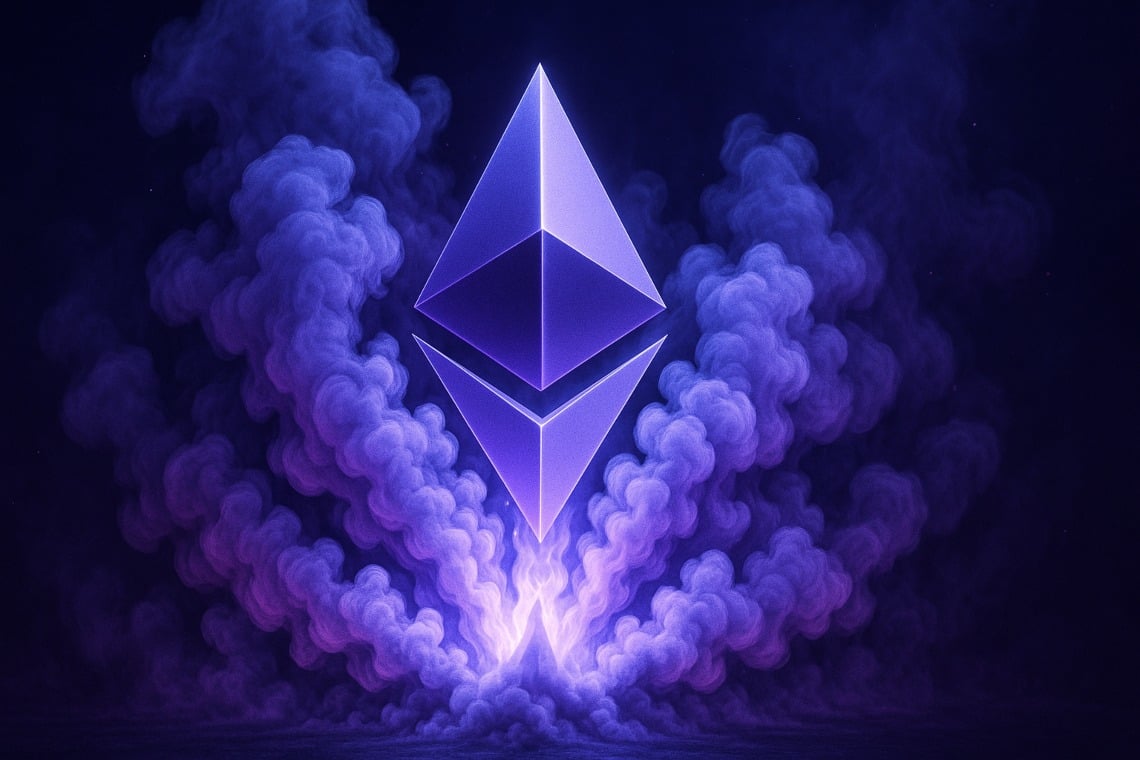The launch of the WLFI token by World Liberty Financial kicked off September with a surge in Ethereum fees: gas soared beyond 100 Gwei, briefly reaching 120 Gwei during peak congestion. Approximately 1.58 million transactions related to the event were recorded within 24 hours, with estimated volumes close to $1.8 billion — figures reported by Blockworks and KuCoin News — and a noticeable increase in costs for users (DEX swaps reached values up to about $145, while basic transfers exceeded $10).
Meanwhile, the Solana network has maintained extremely low fees, with average fees around $0.004, as also highlighted by the official Solana Docs. In this context, despite attempts to optimize inclusion, the pressure on the mempool has remained high.
According to the data collected by Etherscan Gas Tracker and the public dashboards of Dune Analytics that we monitor daily, the majority of the 1.58M transactions were concentrated in the first 24 hours (data updated as of September 2, 2025, 12:00 UTC).
On-chain analysts observe that between 55% and 65% of operations attributable to WLFI were automated approval/claim, significantly contributing to the saturation of the mempool. These cross-measurements between trackers and on-chain queries confirm the timeframe and the extent of the impact on the network.
Key Numbers: WLFI and the “block space race” effect on Ethereum
- Event date: September 1, 2025
- Transactions related to WLFI: approximately 1.58 million in 24h
- Wallets involved: over 550,000
- Estimated volume: approximately $1.8 billion in 24h
- ETH gas price: above 100 Gwei, with peaks up to around 120 Gwei
- Average user cost: basic transfers over $10 and DEX swaps up to around $145
- Solana: average fees around $0.004, with costs in the range of thousandths of a dollar
Why Gas Spiked on Ethereum: Network Mechanics in Brief
When the demand for block space exceeds capacity, validators prioritize transactions with higher fees. With EIP-1559, the base fee realigns block by block based on the level of fill, while the priority fee regulates priority in the mempool. It should be noted that, in the presence of concentrated events such as claims and unlocks, the cost curve quickly shifts upwards, compressing inclusion for transactions less generous in terms of gas.
In practice: why token launches weigh more
Contracts related to tokens tend to involve more on-chain calls compared to a simple transfer. To speed up inclusion, many users send retry with increased fees, accumulating competing transactions and, in fact, accentuating the pressure on the mempool. An interesting aspect is the speed at which the gas price can skyrocket: it only takes a few minutes to trigger a snowball effect.
WLFI Wave Timeline
- Pre-event (hours before): progressive increase in fees and intensification of contract approvals.
- Event (September 1, 2025): gas spikes exceeding 100–120 Gwei, with skyrocketing costs for operations on DEX and claims.
- 24–48 hours later: partial normalization; complex operations remain costly for a longer period, while simple transfers decrease more rapidly.
Ethereum vs Solana: what it really cost
The WLFI wave has reignited the competition between networks. On Ethereum, the costs for complex operations have risen to levels in the hundreds of dollars, while on the Solana network, fees have remained around the thousandths of a dollar. During the WLFI peak period, the comparison is as follows:
| Network | Peak fee/gas | Transfer base (USD) | Swap DEX (USD) | Note |
| —————– | ———————————————— | ——————- | ——————————————- | ——————————— |
| Ethereum (L1) | over 100–120 Gwei | above $10 | up to around $145 | congestion during WLFI claims |
| Solana | fees in the order of thousandths of a dollar | around $0.004 | values in the order of cents of a dollar | high throughput, stable costs |
Note: the cost gap impacts fundamental aspects such as scalability and user experience, two key factors for the development of DApps and DeFi protocols.
Congestion and Current Limits: What WLFI Has Highlighted
- Block capacity: the gas limit per block sets a maximum threshold for instantaneous throughput.
- Dynamic pricing: the mechanism rewards those who are willing to pay more during peaks.
- Concentrated events: the combination of airdrops, claims, and unlocks generates synchronized spikes that the network absorbs with difficulty.
Implications for users, developers, and the market
- Layer 2: part of the traffic migrates to rollups to mitigate costs on Ethereum.
- Deploy multi-chain: smart contracts and applications are also moving to low-fee networks for use cases sensitive to gas prices.
- Gas optimization: focus on leaner contracts, batching techniques, and better event scheduling.
Effect on ETH Price: Initial Observations
At the beginning of September 2025, there was a slight decline in ETH, with the rest of the market relatively stable. The launch of WLFI has reinforced the narrative of “fee volatility” as an operational risk on L1 networks, with possible repercussions on sentiment in the short term. It must be said that the situation, at the moment, remains evolving.
Outlook: What to Expect in Upcoming Launches
- More rollups and sidechains: a load distribution that could improve cost predictability.
- Protocol upgrade: tools for rate limiting and user-side gas management are being discussed to contain spikes.
- Scheduling of airdrops: wider time windows can help avoid sudden traffic spikes.
The WLFI event demonstrates how high-profile launches on L1 blockchain can bring fees back to levels comparable to those during periods of high transactional intensity, highlighting the need for greater scalability, more predictable costs, and less “explosive” launch designs.
